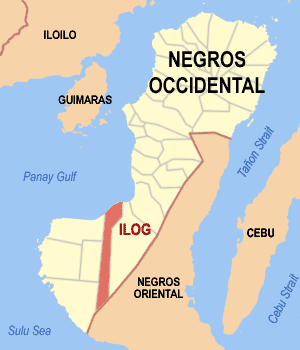
Ilog, officially the Municipality of Ilog, is a 2nd class municipality in the province of Negros Occidental, Philippines. According to the 2020 census, it has a population of 59,855 people.

Binalbagan, officially the Municipality of Binalbagan, is a 1st class municipality in the province of Negros Occidental, Philippines. According to the 2020 census, it has a population of 71,407 people.

Calatrava, officially the Municipality of Calatrava, is a 1st class municipality in the province of Negros Occidental, Philippines. According to the 2020 census, it has a population of 82,540 people.

Himamaylan, officially the City of Himamaylan, is a 3rd class component city in the province of Negros Occidental, Philippines. According to the 2020 census, it has a population of 116,240 people.

Isabela, officially the Municipality of Isabela, is a 2nd class municipality in the province of Negros Occidental, Philippines. According to the 2020 census, it has a population of 64,516 people.

Kabankalan, officially the City of Kabankalan, is a 1st class component city in the province of Negros Occidental, Philippines. According to the 2020 census, it has a population of 200,198 people making it the second most populous city in Negros Occidental next to Bacolod.

La Carlota, officially the City of La Carlota,, is a 4th class component city in the province of Negros Occidental, Philippines. According to the 2020 census, it has a population of 66,664 people. making it the least populous city in the province.
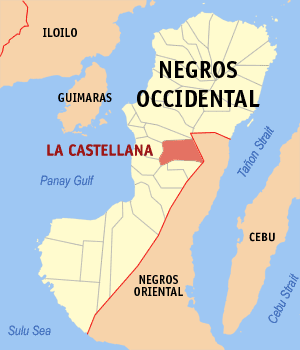
La Castellana, officially the Municipality of La Castellana, is a 1st class municipality in the province of Negros Occidental, Philippines. According to the 2020 census, it has a population of 79,492 people.

Manapla, officially the Municipality of Manapla, is a 2nd class municipality in the province of Negros Occidental, Philippines. According to the 2020 census, it has a population of 55,083 people.

Moises Padilla, officially the Municipality of Moises Padilla, is a 3rd class municipality in the province of Negros Occidental, Philippines. According to the 2020 census, it has a population of 43,462 people.

Murcia, officially the Municipality of Murcia, is a 1st class municipality in the province of Negros Occidental, Philippines. According to the 2020 census, it has a population of 88,868 people. It is 17 kilometres (11 mi) east of Bacolod.
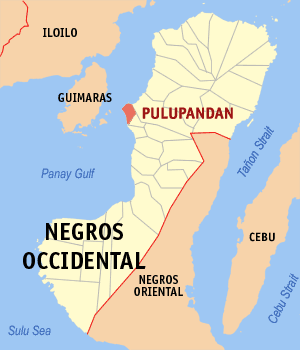
Pulupandan, officially the Municipality of Pulupandan, is a 3rd class municipality in the province of Negros Occidental, Philippines. According to the 2020 census, it has a population of 30,117 people.
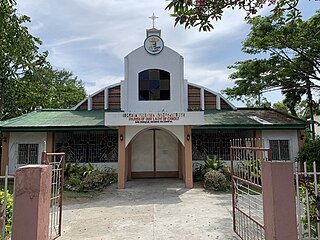
San Enrique, officially the Municipality of San Enrique, is a 4th class municipality in the province of Negros Occidental, Philippines. According to the 2020 census, it has a population of 24,177 people.
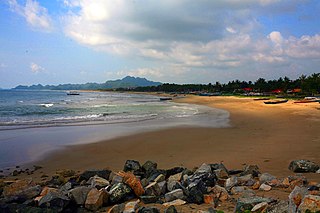
Sipalay, officially the City of Sipalay, is a 4th class component city in the province of Negros Occidental, Philippines. According to the 2020 census, it has a population of 72,448 people. It is the top tourist destination in the province of Negros Occidental.

Talisay, officially the City of Talisay, is a 4th class component city in the province of Negros Occidental, Philippines. According to the 2020 census, it has a population of 108,909 people.
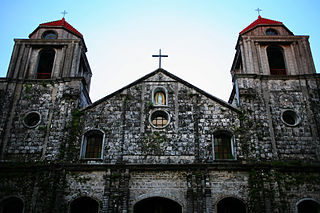
Valladolid, officially the Municipality of Valladolid, is a 4th class municipality in the province of Negros Occidental, Philippines. According to the 2020 census, it has a population of 39,996 people.

Victorias, officially the City of Victorias, is a 4th class component city in the province of Negros Occidental, Philippines. According to the 2020 census, it has a population of 90,101 people.

San Lorenzo, officially the Municipality of San Lorenzo, is a 5th class municipality in the province of Guimaras, Philippines. According to the 2020 census, it has a population of 29,444 people.

Gamay, officially the Municipality of Gamay, is a 4th class municipality in the province of Northern Samar, Philippines. According to the 2020 census, it has a population of 23,367 people.

San Miguel, officially the Municipality of San Miguel, is a 4th class municipality in the province of Iloilo, Philippines. According to the 2020 census, it has a population of 30,115 people.























